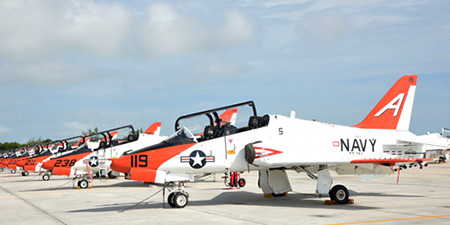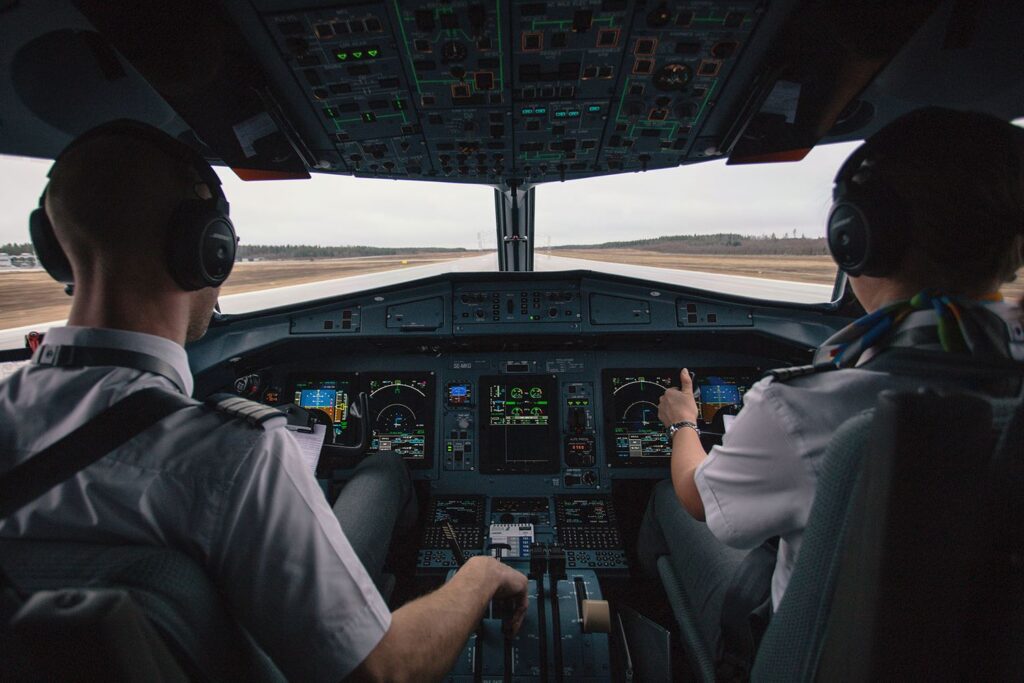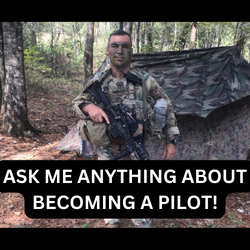
Have you ever wondered how many years of flight school it takes to become a pilot? Well, you’re in luck because we’re here to give you all the details! Becoming a pilot is an exciting career choice that requires a significant amount of training and education. In this article, we’ll break down the different stages and years of flight school you’ll need to complete to achieve your dream of becoming a pilot. So, if you’re ready to soar to new heights, let’s dive right in!
When it comes to flight school, the number of years you’ll spend depends on the type of pilot you want to become. The most basic requirements to become a private pilot usually involve around 40 to 60 hours of flight time, which can take anywhere from 6 months to a year to complete. However, if you have aspirations of becoming a commercial pilot, the journey becomes much longer. Commercial pilot training typically requires around 250 to 300 flight hours, which can take anywhere from 18 months to 2 years to complete.
But that’s not all – after completing the initial flight training, you’ll need to obtain additional ratings and certifications to advance your career. These can include instrument ratings, multi-engine ratings, and airline transport pilot ratings. Each of these ratings requires further training and flight hours, adding more time to the overall process. So, although becoming a pilot is an exciting and rewarding career choice, it requires a significant commitment of time and dedication.
In conclusion, the number of years it takes to become a pilot depends on your career goals. If you aim to become a private pilot, it may take around 6 months to a year, while becoming a commercial pilot can take upwards of 2 years. Additionally, you’ll need to complete additional ratings and certifications to advance your career further. So, if you’re ready to embark on this journey, get ready to put in the time and effort required to reach for the skies.

Understanding Flight School
What is flight school?
Flight school refers to the training programs and educational institutions that provide aspiring pilots with the necessary skills and knowledge to become a certified pilot. Flight schools offer a wide range of courses and programs, catering to individuals interested in a variety of aviation career paths.
Types of flight schools
There are several types of flight schools, each offering different programs and catering to different types of students. Some of the most common types include:
-
Part 61 Flight Schools: These flight schools operate under Federal Aviation Administration (FAA) regulations Part 61. They offer a more flexible training program, allowing students to work at their own pace.
-
Part 141 Flight Schools: These flight schools operate under FAA regulations Part 141. They follow a structured syllabus and have more rigorous training requirements. Students at Part 141 flight schools may be eligible for reduced flight time requirements.
-
University Aviation Programs: Many universities and colleges offer aviation programs that combine academic coursework with flight training. These programs typically result in a degree along with the necessary flight training.
-
Military Flight Schools: Military flight schools train individuals to become military pilots. These schools have specific eligibility requirements and provide comprehensive training for military aircraft.
Importance of flight school
Flight school is crucial for individuals aspiring to become pilots for several reasons:
-
Safety: Flight school provides students with the necessary knowledge and skills to operate an aircraft safely. Pilots must understand the principles of flight, navigation, and aviation regulations to ensure the safety of themselves and their passengers.
-
Licensing: Flight school is a necessary step towards obtaining the various pilot licenses and certifications required to fly professionally. These licenses include the Private Pilot License (PPL), Instrument Rating (IR), Commercial Pilot License (CPL), Multi-Engine Rating (MER), and Airline Transport Pilot License (ATPL).
-
Skill Development: Flight school helps develop and refine piloting skills through practical training and experience. Students learn how to handle different aircraft, navigate various weather conditions, and manage emergency situations.
-
Networking: Flight school provides students with opportunities to interact with industry professionals, fellow students, and potential employers. Networking plays a crucial role in securing employment opportunities and advancing one’s aviation career.
Requirements for Pilot Training
Minimum educational requirements
To enroll in flight school, there are usually no specific educational requirements beyond a high school diploma or its equivalent. However, some institutions may prefer applicants with a background in mathematics, physics, or engineering, as these subjects are relevant to aviation.
Age and health requirements
To begin flight training, individuals must be at least 16 years old to fly solo and 17 years old to obtain a private pilot license. There is no upper age limit for pilot training, as long as the individual meets the medical requirements set by the FAA.
Regarding health requirements, aspiring pilots have to obtain a medical certificate issued by an FAA-approved medical examiner. The medical certificate ensures that the pilot is physically and mentally fit to fly an aircraft.
Psychological and aptitude tests
Flight school candidates may be required to undergo psychological evaluations and aptitude tests to assess their suitability for a career in aviation. These tests help identify individuals with the necessary cognitive abilities, decision-making skills, and stress tolerance required for piloting.

Private Pilot License (PPL)
Introduction to PPL
The Private Pilot License (PPL) is the first step towards a professional pilot career. It allows an individual to fly for recreational purposes or with friends and family. PPL holders are not allowed to be compensated for their flying services.
PPL training focuses on developing fundamental piloting skills, including aircraft handling, navigation, emergency procedures, and radio communication. Students learn both theory and practical skills during their training.
Training duration for PPL
The duration of PPL training can vary depending on the individual’s availability and the flight school’s program structure. On average, it takes around 6-8 months of full-time training to obtain a PPL. Part-time training can take longer, ranging from 9-12 months or more.
The training consists of ground school classes, flight simulator sessions, and actual flight time. Students are required to complete a minimum of 40 hours of flight time, including 20 hours of flight instruction and 10 hours of solo flight.
Curriculum and subjects covered
The PPL curriculum covers a wide range of subjects that are essential for safe and proficient flying. Some of the key subjects included in PPL training are:
-
Aerodynamics and Flight Principles: Students learn the principles of flight, including lift, drag, and thrust, as well as how different aircraft components work together.
-
Navigation and Flight Planning: The navigation component of the curriculum teaches students how to read aviation charts, plan flight routes, calculate fuel consumption, and use navigational aids like GPS.
-
Airspace and Air Traffic Control: Students learn about different types of airspace, communication protocols with air traffic control, and how to navigate through controlled airspace.
-
Meteorology: Understanding weather patterns, cloud formations, and weather hazards is a critical aspect of PPL training.
-
Regulations and Safety: Students learn about aviation regulations and safe operating practices to ensure compliance with FAA guidelines.
-
Emergency Procedures: PPL training covers emergency handling techniques, such as engine failures, loss of control, and emergency landings.
Instrument Rating (IR)
Importance of IR
The Instrument Rating (IR) is a critical qualification that allows pilots to fly in low visibility conditions, such as clouds or fog, using only the aircraft’s instruments. It enhances a pilot’s ability to navigate and operate an aircraft safely, particularly when visual references are limited.
An IR is a valuable addition to a pilot’s skillset and is often a prerequisite for many professional pilot positions, including airline pilot roles.
Training duration for IR
Obtaining an IR typically takes longer than obtaining a PPL. The training duration can range from 2-6 months, depending on the flight school’s program structure, the student’s availability, and the individual’s aptitude for instrument flying.
Flight schools often require candidates to have a minimum flight experience of 50-100 hours before beginning IR training, although this can vary.
Simulator training for IR
Instrument Rating training involves significant simulator time to simulate various weather conditions and emergency situations. Simulators allow pilots to practice instrument approaches, holds, and other procedures in a controlled environment.
Simulator training helps pilots develop the necessary skills to interpret instrument indications accurately, make precise instrument-based decisions, and respond effectively to emergency situations.

Commercial Pilot License (CPL)
Overview of CPL
The Commercial Pilot License (CPL) is required for individuals who wish to fly for compensation or hire. It enables pilots to work as flight instructors, charter pilots, corporate pilots, and in other commercial aviation roles.
A CPL builds upon the skills and knowledge gained during PPL training and introduces advanced piloting techniques, flight planning, and additional regulations.
Training duration for CPL
The training duration for a CPL can range from 6-12 months, depending on the flight school’s program structure, the student’s availability, and the individual’s progress and proficiency.
Flight schools typically require candidates to have a minimum flight experience of 200-250 hours, including the hours accumulated during PPL training, before beginning CPL training.
Flying hours requirements
To obtain a CPL, aspiring pilots must accumulate a minimum number of flight hours, which varies depending on the flight school and regulatory requirements. The FAA requires a minimum of 250 hours of flight time, including specific requirements for cross-country flights, night flights, and instrument flying.
The required flight hours include both dual instruction (with an instructor) and solo flight time. It is vital for aspiring pilots to log flight hours systematically to meet the CPL requirements.
Multi-Engine Rating (MER)
Significance of MER
The Multi-Engine Rating (MER) allows pilots to operate aircraft with more than one engine. Obtaining an MER enhances a pilot’s versatility and opens up opportunities to fly larger and more complex aircraft.
Many commercial aviation roles, such as regional airline pilots or corporate jet pilots, require an MER as part of the pilot’s qualifications.
Training duration for MER
The training duration for an MER can vary depending on the flight school’s program structure, the student’s availability, and the individual’s progress and proficiency. On average, it takes around 2-3 weeks to complete the MER training.
The training usually includes ground school instruction on multi-engine aircraft systems, flight maneuvers specific to multi-engine aircraft, and simulator sessions before progressing to actual flight time.
Checkride and certification
To obtain the MER, pilots must successfully complete a checkride with an FAA examiner. The checkride consists of an oral examination and a flight test.
During the checkride, the pilot is evaluated on their knowledge of multi-engine aircraft systems, emergency procedures, and their ability to safely operate a multi-engine aircraft. Upon passing the checkride, the pilot is issued the Multi-Engine Rating certificate.

Airline Transport Pilot License (ATPL)
ATPL explained
The Airline Transport Pilot License (ATPL) is the highest level of pilot certification. An ATPL is required for pilots wishing to work for major airlines and operate as a captain or first officer on large commercial aircraft.
ATPL training combines advanced flight training, theoretical knowledge, and experience requirements to prepare pilots for the responsibilities associated with commanding large aircraft.
Training duration for ATPL
The training duration for an ATPL can vary significantly depending on various factors such as flight school program structure, the student’s availability, and the individual’s aptitude and progress in training.
On average, ATPL training can take anywhere from 1-2 years to complete. The training involves a mix of advanced flight training, simulator sessions, and extensive theoretical study.
Advanced flight training
ATPL training focuses on developing advanced piloting skills required for operating large commercial aircraft. The training includes extensive flight time in complex aircraft, cross-country flights, and airline-specific procedures and techniques.
In addition to flight training, ATPL candidates must complete theoretical subjects such as aircraft systems, advanced navigation, meteorology, aviation regulations, crew resource management, and human factors.
Specialized Training and Endorsements
Type ratings
Type ratings refer to additional qualifications pilots must obtain to operate specific aircraft types. Each type of aircraft has different systems and operating procedures, requiring pilots to undergo specialized training and pass a type rating checkride.
Type ratings are typically obtained by pilots pursuing careers in the airline industry or other specialized aviation sectors. Flight schools and airlines often provide type rating training as part of their pilot development programs.
Flight instructor certificates
Becoming a flight instructor is a common career path for many pilots. To become a certified flight instructor, pilots must obtain a Flight Instructor Certificate. This certification allows pilots to provide flight instruction to aspiring pilots and build flight experience while teaching.
Flight instructor training involves extensive knowledge in areas such as teaching techniques, flight training methodologies, and instructional flight time.
Other advanced endorsements
There are various other specialized endorsements and training programs available to pilots, depending on their career goals and interests. Some examples include:
-
Aerobatic Training: Aerobatic training focuses on advanced maneuvering and aerobatic flight techniques. This training is popular among pilots interested in aerobatic competitions or airshow performances.
-
Seaplane Rating: A seaplane rating allows pilots to operate seaplanes, providing the unique experience of landing and taking off from bodies of water.
-
Mountain Flying Training: Mountain flying training equips pilots with the skills and knowledge to navigate safely through mountainous terrain, where weather conditions and topography present unique challenges.
-
Remote Pilot Certification (Drone License): With the increasing popularity of drones, some pilots choose to specialize in flying unmanned aerial vehicles (UAVs) commercially. Specific training and certification are required to operate drones for commercial purposes.

Flight School Costs and Financing
Understanding the costs
The cost of flight school can vary significantly depending on factors such as the flight school’s location, program structure, aircraft rental rates, and the individual’s progress and proficiency.
On average, the total cost of flight school, including all the necessary licenses and ratings, can range from $60,000 to $150,000 or more. This cost includes flight training hours, ground school tuition, books and materials, examination fees, and other associated expenses.
It is essential for aspiring pilots to carefully research and understand the cost structure of different flight schools and create a comprehensive financial plan to fund their training.
Scholarships and grants
There are various scholarships and grants available to aspiring pilots to help alleviate the financial burden of flight training. Organizations such as the Aircraft Owners and Pilots Association (AOPA), Experimental Aircraft Association (EAA), and Women in Aviation International (WAI) offer scholarships specifically for aviation students.
Additionally, universities, flight schools, and aviation-related companies may offer their own scholarship programs to support aspiring pilots.
Financing options
Many aspiring pilots rely on financing options to fund their flight training. Some common financing options include:
-
Student Loans: Financial institutions offer loans specifically for flight training. These loans may have specific terms and conditions tailored to aviation students.
-
Personal Loans: Individuals may choose to take out personal loans to finance their flight training. However, it is important to carefully consider the terms, interest rates, and repayment options before taking on personal debt.
-
Aviation Financing Companies: There are companies that specialize in financing flight training. These companies understand the unique financial needs of aspiring pilots and offer flexible financing options.
-
Sponsorship Programs: Some flight schools or aviation organizations offer sponsorship programs, where individuals work for the sponsoring organization in exchange for financial support for their flight training.
It is important for aspiring pilots to thoroughly research and understand the terms and conditions of any financing option before making a decision.
Choosing the Right Flight School
Factors to consider
When choosing a flight school, there are several factors to consider, including:
-
Accreditation and Certifications: Look for flight schools that are accredited by aviation regulatory bodies and have a good reputation for producing qualified pilots. Accreditation ensures that the flight school meets certain standards in terms of training quality and safety.
-
Instructor Qualifications and Experience: The quality and experience of the flight instructors are crucial for effective training. Look for flight schools that have experienced instructors with a strong track record of producing successful pilots.
-
Aircraft Fleet: Consider the condition and variety of aircraft available at the flight school. Having access to well-maintained aircraft that simulate real-life scenarios enhances the training experience.
-
Training Facilities and Resources: Evaluate the flight school’s facilities, including classrooms, simulators, and other training resources. These resources play a vital role in the effectiveness and breadth of training.
-
Placement and Career Support: Research the flight school’s placement rate and understand the level of career support they provide. Flight schools with strong industry connections and comprehensive job placement assistance can be advantageous for future employment.
Accreditation and reputation
Accreditation and reputation are important factors when choosing a flight school. Accreditation ensures that the flight school meets specific standards of quality and safety set by aviation regulatory bodies. Reputable flight schools often have a track record of producing successful pilots and have a positive reputation within the aviation industry.
Visiting and comparing schools
To make an informed decision, it is recommended to visit and compare multiple flight schools. During the visit, take note of the school’s facilities, talk to instructors and students, and ask about their training programs, costs, and placement assistance. This firsthand experience will help in evaluating which flight school best aligns with your goals and requirements.
Accelerated Training Programs
Advantages and disadvantages
Accelerated training programs offer an intensive and compressed training schedule that allows individuals to complete their flight training more quickly. These programs are often popular among individuals who want to fast-track their training and enter the aviation industry sooner.
Advantages of accelerated training programs include:
-
Time and Cost Savings: Accelerated programs allow individuals to complete their flight training in a shorter timeframe, reducing both the time and costs associated with training.
-
Immersive Learning Experience: The intensive nature of accelerated programs provides a focused and immersive learning experience, allowing individuals to fully immerse themselves in the training and build momentum.
-
Career Entry: Completing training quickly can expedite the process of entering the aviation industry and starting a career as a pilot.
Disadvantages of accelerated training programs include:
-
Intensive Workload: The condensed schedule of accelerated programs often means a more demanding workload, requiring dedication and commitment.
-
Limited Flexibility: Accelerated programs may have limited flexibility in terms of scheduling and pacing, allowing less time for individual students to absorb and practice new skills.
-
Information Overload: The fast-paced nature of accelerated programs can sometimes result in information overload and limited time for students to fully process and consolidate what they have learned.
Applicability for different individuals
Accelerated training programs are not suitable for everyone. They are ideal for individuals who have the time, dedication, and ability to commit to an intensive training schedule. It is important to assess personal capabilities and learning preferences before deciding to pursue an accelerated program.
Challenges and Obstacles in Flight Training
Weather and flight cancellations
Weather conditions play a significant role in flight training. Adverse weather conditions, such as strong winds, thunderstorms, or low visibility, can lead to flight cancellations or delays. This unpredictability can disrupt the training schedule and prolong the overall training duration.
Patience and flexibility are key when facing weather-related challenges. It is essential for aspiring pilots to understand that flight training is subject to weather conditions beyond their control.
Time management and dedication
Flight training requires significant time commitment and dedication. Balancing flight training with other responsibilities, such as work, education, or personal commitments, can be challenging. Students must manage their time effectively to ensure adequate progress in their training.
It is important to create a realistic training schedule, prioritize flight training, and maintain consistent practice to ensure steady progress throughout the training program.
Handling academic and practical workload
Flight training encompasses both theoretical and practical components, requiring students to balance academic coursework with flight time. The coursework can be demanding, covering topics such as aerodynamics, meteorology, navigation, regulations, and more.
Students must prepare for ground school classes, stay organized, and effectively manage their study time alongside flight training to excel in both academic and practical aspects of flight training.
Job Prospects and Career Opportunities
Pilot demand and market trends
The demand for pilots has been steadily growing, and the aviation industry continues to experience a shortage of qualified pilots. Factors such as retirements, fleet expansions, and changes in regulatory requirements contribute to this demand.
Despite occasional disruptions to the aviation industry, global air travel is projected to continue growing in the long term, creating a sustained need for pilots. This trend offers promising job prospects for aspiring pilots.
Airline and corporate career paths
Typically, there are two primary career paths for pilots: airline and corporate aviation.
Airline pilots fly for commercial airlines and have the opportunity to operate large commercial aircraft on domestic and international routes. Career progression in the airline industry often involves starting as a First Officer and eventually becoming a Captain. Seniority and experience play a significant role in career advancement within the airline sector.
Corporate pilots, on the other hand, fly for corporations, private individuals, or charter companies. Corporate aviation offers a diverse range of flying assignments, from operating smaller business jets to flying for high-profile individuals or companies.
Both career paths offer unique opportunities and challenges, and the choice depends on individual preferences and career goals.
International job opportunities
The aviation industry provides global career opportunities, with pilots in demand across the world. Pilots who are willing to travel and explore opportunities outside their home countries can find exciting job prospects across various countries and continents.
International job opportunities can offer diverse cultural experiences, exposure to different aviation regulations, and the chance to fly in unique geographical regions and climates.
Conclusion
Summary of flight school journey
The journey to becoming a pilot involves several years of flight school and training. It begins with obtaining a Private Pilot License (PPL), followed by advanced ratings such as the Instrument Rating (IR), Commercial Pilot License (CPL), Multi-Engine Rating (MER), and, for those aspiring to be airline pilots, the Airline Transport Pilot License (ATPL). Pilots can also pursue specialized training and endorsements to enhance their skills and career prospects.
Importance of dedication and perseverance
Becoming a pilot requires dedication, perseverance, and a passion for aviation. Flight training can be challenging at times, with weather disruptions, academic demands, and the need for continuous practice. However, with discipline and a positive mindset, aspiring pilots can overcome these challenges and progress towards their goals.
Exciting career prospects awaiting
The journey through flight school and pilot training is both rewarding and fulfilling. The aviation industry offers diverse career opportunities, with a growing demand for pilots globally. Whether flying for airlines or corporate aviation, the prospects for a satisfying and exciting career as a pilot are within reach for those who are committed to their training and seek to make their dreams take flight.


